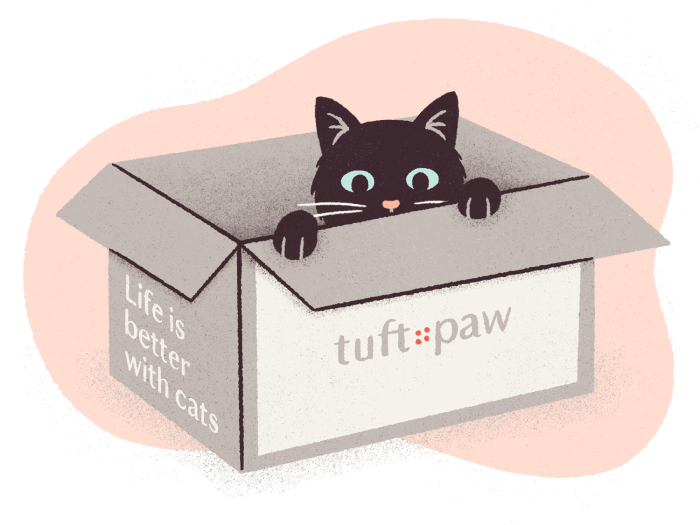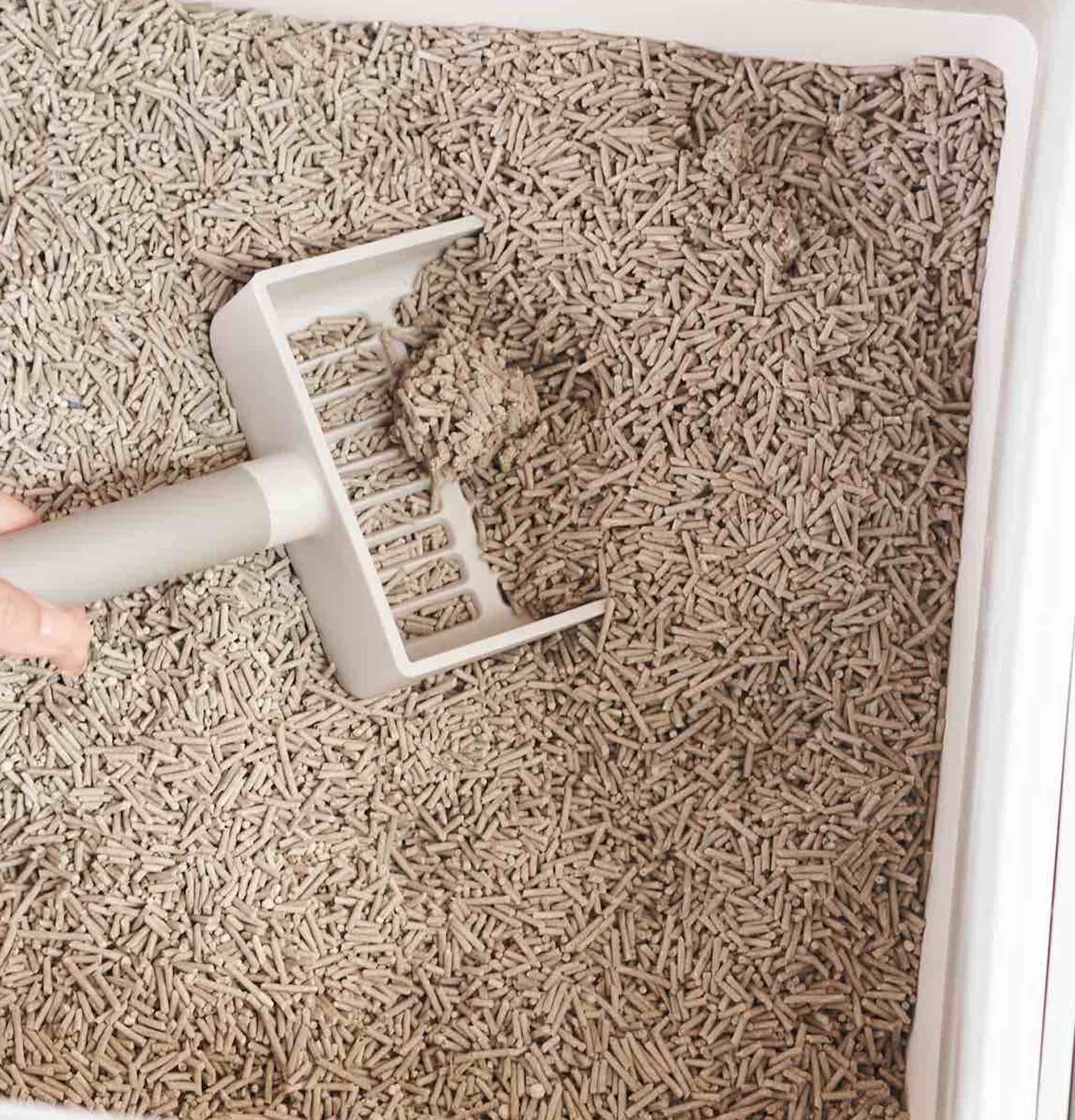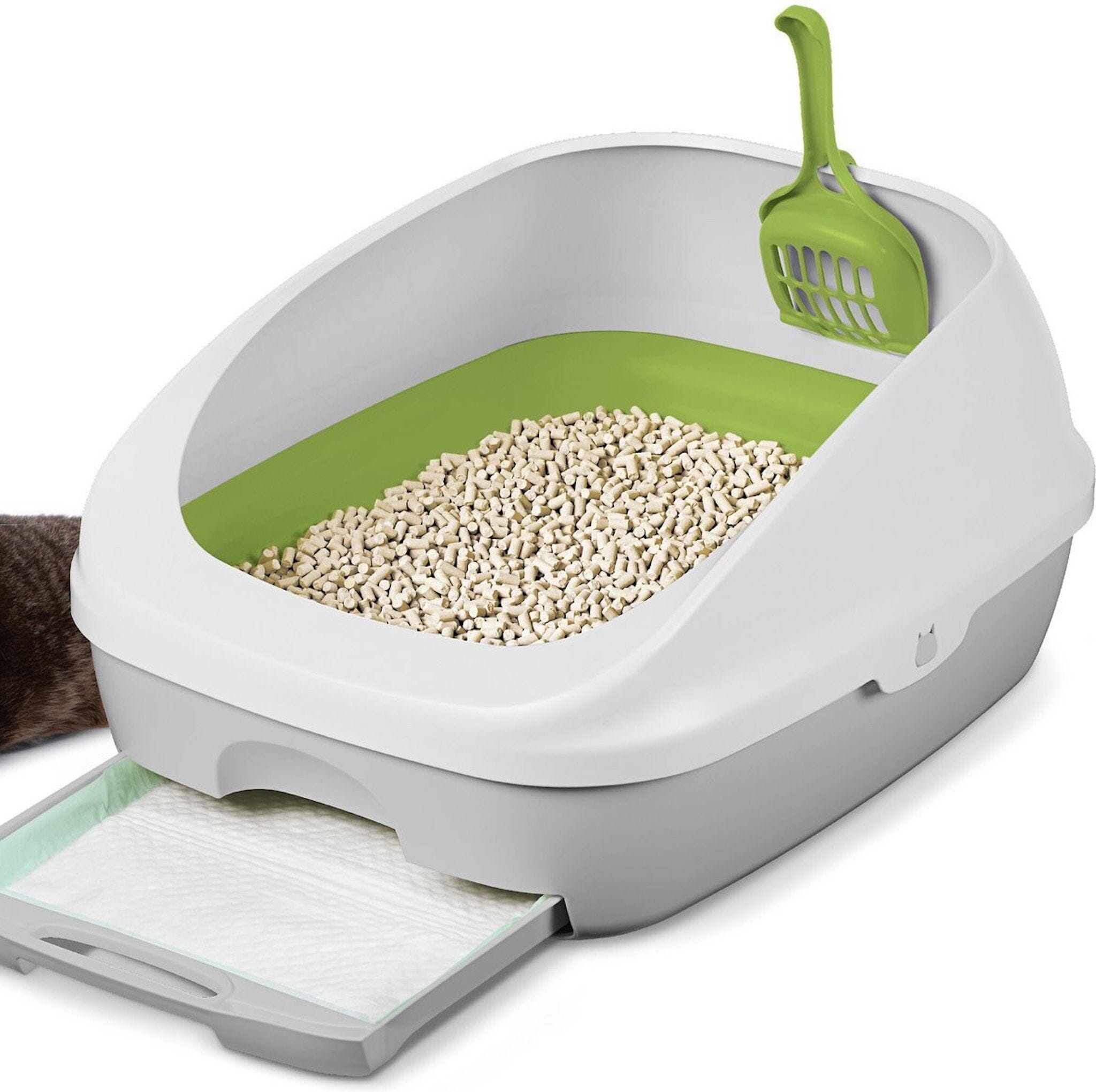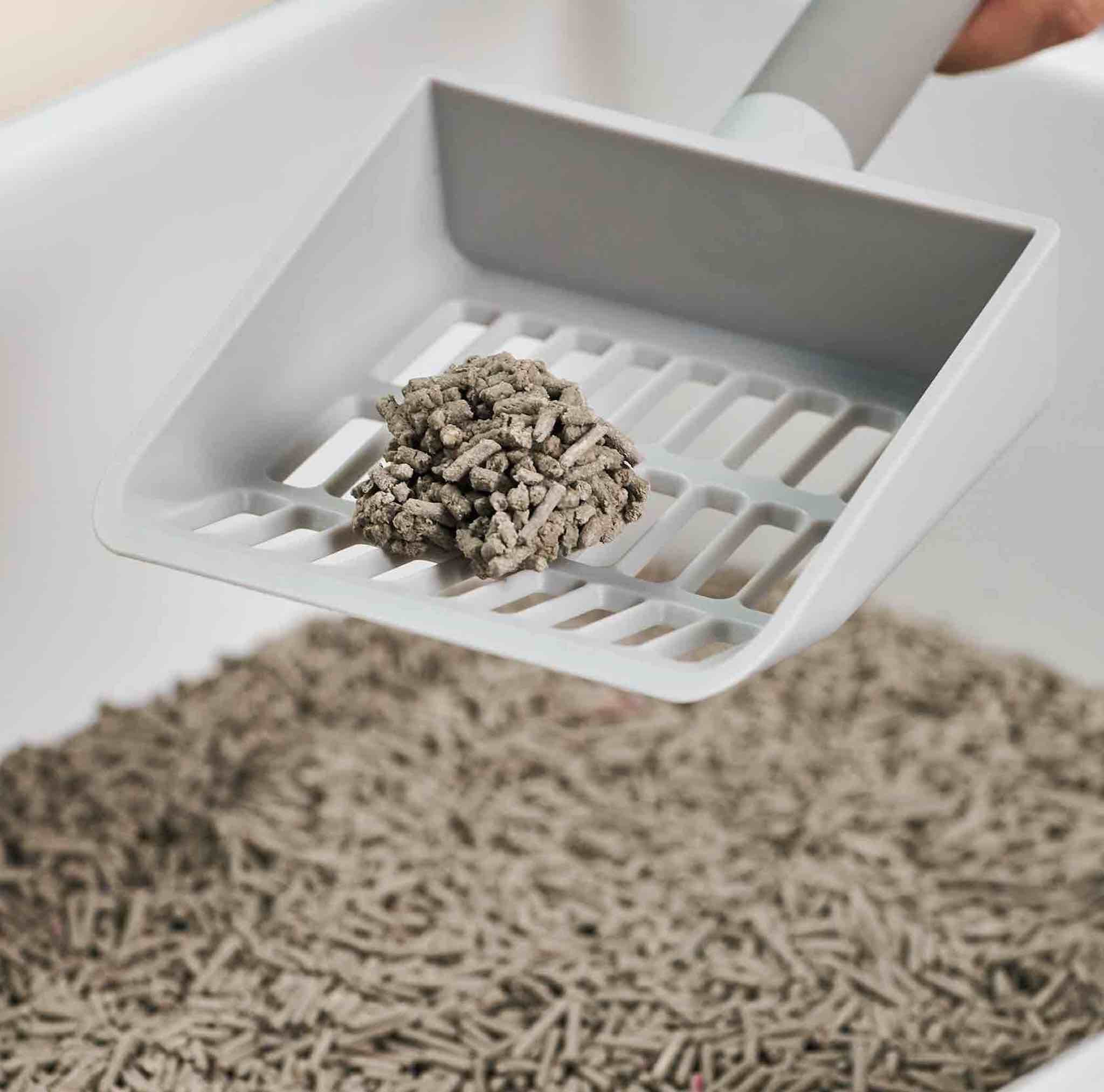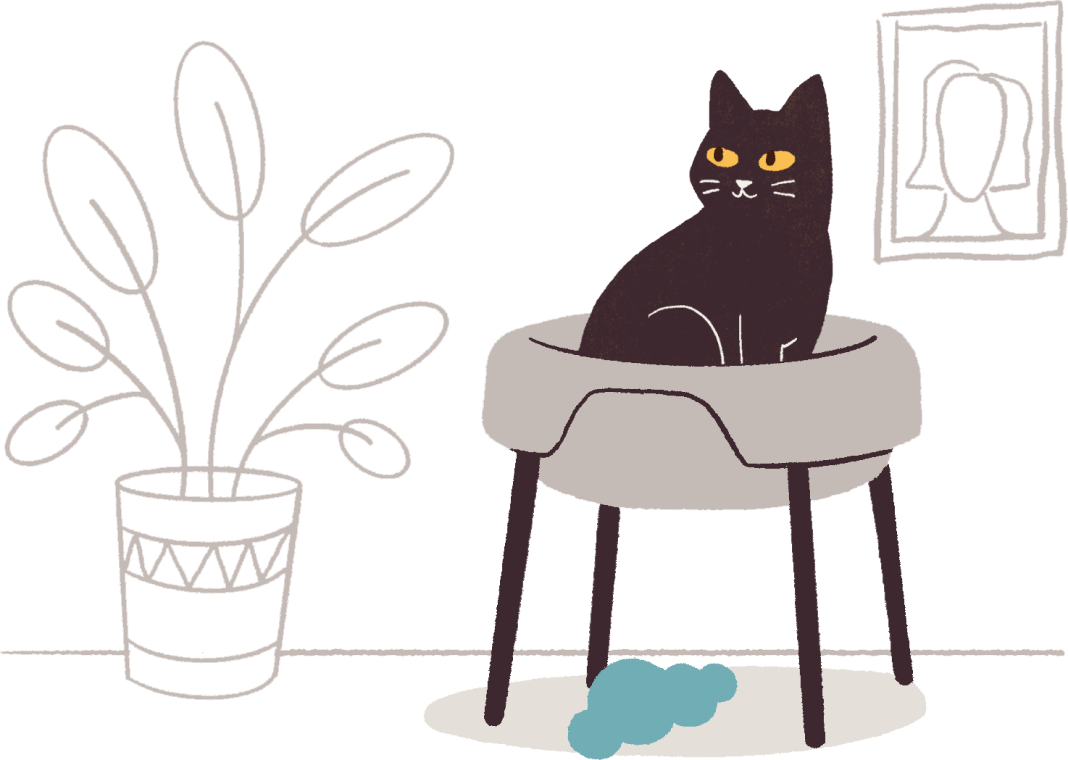When it comes to selecting the right cat litter, there's an essential decision to make: clumping or non-clumping? This choice can impact your cat's comfort and your ease of maintenance. In this article, we’ll explore the debate of clumping vs non-clumping cat litter, go over the pros and cons of each, and help you make an informed decision.
Here at tuft + paw, we are cat experts. We've spent countless hours determining which litter features are most important to cats and cat parents alike. The information in this article is based on consultation with a cat behaviorist, veterinarian, online research, and our own experience as cat parents.
We’ll start with an overview of clumping litter, then move on to non-clumping litter.
What Is Clumping Cat Litter?
Clumping cat litter has gained popularity for its ability to lock in odors and simplify the scooping process. Cats, just like humans, appreciate cleanliness, and a well-maintained litter box encourages their regular use. Clumping cat litter used to only be available as clay, but now many natural litter alternatives exist: tofu cat litter, corn, wood, etc.
 Really Great Cat Litter by tuft + paw
Really Great Cat Litter by tuft + paw
Popular Clumping Cat Litter Brands
Pros of Clumping Cat Litter
Easy to Scoop
The main advantage of clumping cat litter is right there in its name: clumping. When your cat does their business, the litter swiftly forms neat, scoopable clumps. Contrast this with non-clumping litters, in which liquids need to be stirred to ensure maximum absorption.
Locks in Odors
We all know that cat odors can be a bit pungent. Clumping cat litter, with its moisture-activated magic, creates a seal around waste, effectively locking in those odors and minimizing its contact with the air. In fact, most of the best litters for odor control are clumping.

Lasts Longer
Not only does clumping litter excel at odor control, but it also has longevity on its side. The clumps that form are easy to remove, leaving behind fresh, unused litter. In the grand scheme of things, it means you'll be emptying and refilling the entire litter box less often.
Keeps the Litter Box Clean
Being able to scoop out all waste ensures a tidier litter box for your cat (and you). Your cat is more likely to use a pristine restroom, and that's a win-win for everyone.
Cons of Clumping Cat Litter
Often Pricier
While clumping cat litter has a slew of benefits, it's important to note that it often comes with a slightly higher price tag compared to non-clumping alternatives (at least when comparing clumping clay to non-clumping clay). However, many cat parents find the added cost worthwhile for the convenience it brings.
Clumping Clay Is Harmful If Ingested
If ingested, clumping clay can expand in your cat's digestive tract, potentially leading to blockages. This is unlikely, but important to consider if you have a curious cat with a penchant for taste-testing, or one with an eating disorder like pica. Natural clumping litters like tofu and corn are not as dangerous when ingested because they break down when wet. In contrast, clumping clay litter turns into a cement-like substance.

What Is Non-Clumping Cat Litter?
Non-clumping cat litter, as the name suggests, does not form clumps when wet. While traditionally made from clay, alternatives made from other absorbent materials are widely available, including silica gel (aka crystal litter), wood pellets, and paper.
Using non-clumping litter is straightforward: scoop solid waste, stir the litter daily to ensure liquid waste absorption, and replace the entire litter box every couple weeks or so. However, odors can accumulate quickly in non-clumping litter due to the used litter remaining in the box.
Popular Non-Clumping Cat Litter Brands
Pros of Non-Clumping Cat Litter
Non-clumping cat litter has several advantages that make it appealing to some cat parents:
Price
Non-clumping clay litter is generally more budget-friendly than clumping clay litter, providing effective performance without breaking the bank. Most other types of litter (like wood) follow this general pricing trend, but an important exception is crystal litter. Crystal litter is often fairly expensive.
Safer to Ingest
While not safe for consumption, non-clumping litter is safer than clumping varieties. Clumping litter can expand in the digestive tract, potentially causing blockages. If your cat is prone to eating non-food items, non-clumping litter may be the safer option.
Less Scooping
Non-clumping litter only requires the removal of solid waste. Liquid waste is absorbed and should be stirred to enhance absorption and evaporation, reducing urine pooling and odors.
Can Be Easier to Clean
Non-clumping litter is less likely to cement itself to the litter box, making cleanup simpler.
Compatible with Sifting Litter Boxes
Some non-clumping pellet litters (like pine) are ideal for use with sifting litter boxes. Wet pellets dissolve and fall to the box's bottom layer, leaving a clean top layer. This system can be even more convenient than clumping litter for many cat parents.
Cons of Non-Clumping Cat Litter
Nevertheless, there are reasons why most cat parents prefer clumping cat litter. Here are some downsides of using non-clumping cat litter:
Dirty Litter Stays In the Box
Non-clumping litter doesn't allow for easy removal of used litter, accelerating odor buildup.
Less Efficient
Non-clumping litter requires more frequent complete changes compared to clumping litter. This could make it less cost-effective in the long run.
Weaker Odor Control
Clumping litter generally excels in odor control compared to non-clumping litter. The latter may require additional deodorizing additives.
Less Data About Cat’s Urine
Non-clumping litters may provide less information about your cat's urination habits due to the way urine is absorbed throughout the litter. This makes it hard to gauge the size of your cat’s urinations.
Choosing the Right Litter for Your Cat
So, how do you choose between clumping and non-clumping cat litter? Your decision should align with your cat's and your personal preferences.
Choose Clumping Cat Litter If…
- You prioritize odor control.
- Convenience in terms of scooping and maintaining the litter box is crucial to you.
- You don't mind the slightly higher cost for better performance and ease of use.
- Your cat is not prone to ingesting non-food items.
Choose Non-Clumping Cat Litter If…
- You are on a tight budget and cost is a primary concern.
- Your cat has a history of eating non-food items, making the non-clumping variety safer.
- You don't mind more frequent complete changes and slightly weaker odor control.
In conclusion, your choice between clumping and non-clumping cat litter should cater to both your preferences and your cat's comfort. Keep in mind that the type of litter you select, and how well you maintain the litter box, significantly influences your cat's litter box habits. Understanding these dynamics will ensure a cleaner and happier environment for both you and your feline friend.
